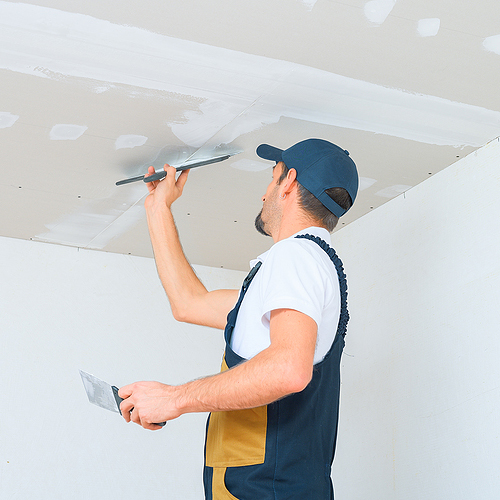Start out your paint job among the lowest point on the surface and work towards the ceiling. This will likely simplify using the extension and lessen the need to alter the extension length. Using an extension will give you flexibility for painting with various extension options.
Holding the pole effectively will make the whole process simpler. When working with a completely extended extension, hold onto it at the middle to sustain accuracy. Concentrate on grasping towards the last section where the lower pole meets with the middle extension. This technique creates less strain on the upper extensions and supplies optimum delivery.When raising and lowering the extension pole, use both of your hands for smooth control.
Don't push too hard when you're loading the roller with paint. Guide the roller gently allowing it to do the majority of the work for you.
During the paint loading process with an extension pole, grasp the last portion next to the roller and the midsection as close to the lower section that you can reach. This method enables you to secure support on the extension when you are reloading the paint.
For the easiest access, grasp the pole vertically when using the optimum extension until it's near the surface you will be painting. Hold close to the center bottom area of the pole as close as you can to the top of each section for a balanced application. Cautiously lean the pole close to the surface to start painting once you are standing close to the wall.
Once the roller makes contact with the wall, you may step back and alter your grip for more comfortable painting. Grip the pole in the center pole and the bottom while painting for much better handling. Inaccurately using the extension causes the pole to become too bottom or top-heavy and can lead to an irregular finish.
Tightening and loosening the chuck or the collet locking mechanism is straightforward. Just hold the rod underneath the collet and lock or unlock the extension segment you want to slide. Tighten the chuck till the pole that slides out stops moving. Analyze the pole once you tighten the chuck to make sure it holds. Over-tightening the chuck may cause pole deterioration. Use caution when you are adjusting.
Keep the extension pole pure from paint debris accumulating inside of the slide. Thoroughly clean any paint off the extension as you work so that it doesn’t get hard or dry. Have a wet rag handy for cleaning latex products up and some paint thinner accessible for oil-based cleaning. Ensure the chuck and pole and collet are dry from thinner and water ahead of modifying. Improve storage by keeping your extension pole folded away to its compact size. For preferred results with the extension pole, use standard-sized paint handle rollers. Avoid using a long-handled roller since this will be too difficult.
Purchasing an extendable pole is a worthy investment. It is reusable and can help you paint ceilings, walls and vaulted areas easily. It is the easiest way to accurately paint vaulted ceilings and walls. It will last for many years if you take good care with cleaning and storing following use. The telescoping feature enables you to reach high locations without having to rely on a ladder. It is a worthy painting tool which is worth its weight in gold.
Some people use their painting extension poles to dust high window ledges, window frames, ceiling fans and more. Keep your painting extension situated in an easy-to-locate place for the best access to cope with all of your cleaning and painting concerns.




